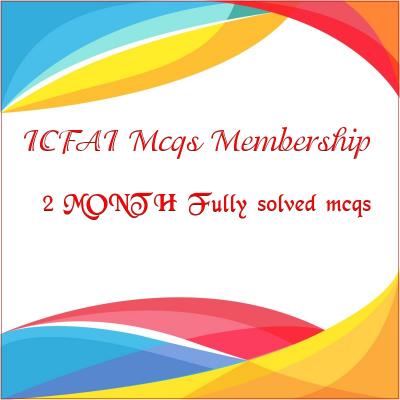MARKETING MANAGEMENT
Price:
Rs500
Case 1
1997 saw the US$19 billion merger of Guinness and Grand Met to form Diageo, the world’s largest drinks company. Guinness was the group’s top- selling beverage after Smirnoff vodka, and the group’s third most profitable brand, with an estimated global value of US$ 1.2 billion. More than 10 million glasses of the world’s most popular stout were sold every day, predominantly in Guinness’ top markets: respectively, the UK, Ireland, Nigeria, the USA and Cameroon.
However, the famous dark stout with the white, creamy head was causing some strategic concerns for Diageo. In 1999, for the first time in the 241-year history of Guinness, sales fell. In early 2002 Diageo CEO Paul Walsh announced to the group’s concerned shareholders that global volume growth of Guinness was down 4 per cent in the last six month of 2001 and, more alarmingly, sales were also down 4 per cent in its home markets, Ireland. How should Diageo address falling sales in the centuries- old brand shrouded in Irish mystique and tradition?
The changing face of the Irish beer market
The Irish were very fond of beer and even fonder of Guinness. With close to 200 liters per capita drunk each year- the equivalent of one pint per person per day- Ireland ranked top in worldwide per capita beer consumption, ahead of the Czech Republic and Germany.
Beer accounted for two-thirds of all alcohol bought in Ireland in 2001. Stout led the way in volume sales and accounted for 40 per cent of all beer value sales. Guinness, first brewed in 1759 in Dublin by Arthur Guinness, enjoyed legendary Status in Ireland, a national symbol as respected as the green, white and gold flag. It was by far the most popular alcoholic drink in the Ireland, accounting for nearly one of every two points of beer sold. Its nearest competitors were Budweiser and Heineken, which held 13 per cent and 12 per cent of the market respectively.
However, the spectacular economic growth of the Irish economy since the mid-1990s had opened up the traditional drinking market to new cultures and influences, and encouraged the travel-friendly Irish to try other drinks. Beer and in particular stout were gradually losing popularity compared with wine or the recently launched RTDs (ready-to-drinks) or FABs (flavored alcoholic beverages), which the younger generation of drinkers considers trendier and ‘healthier. As a Euromonitor report explained:
Younger consumers consider dark beers and stout to be old fashioned drinks, with the perceived stout or ale drinker being an old, slightly overweight man and thus not in tune with image conscious youth culture.1
Beers sales, which once accounted for 75 per cent of all alcohol bought in Ireland, were expected to drop to close to 50 per cent by 2006, while stout sales were forecast to decrease by 12 per cent between 2002 and 2006. Giving Guinness a boost in its home market With Guinness alone accounting for 37 per cent of Diageo’s volume in the market, Guinness/UDV Ireland was one of the feel the pain caused by the declining popularity of beer and in particular stout. A Euromonitor report in February 2002 explained how the profit of the Guinness drinker, typically men aged 21-plus, was affected:
The average age of Guinness drinkers is rising and this is bringing about the worrying fact that the size of the Guinness target audience is falling. The rate of decline is likely to quicken as the number of less brand loyal, non-stout drinking younger consumer’s increases.
2 The report continued: In Ireland, in particular base for Guinness is shrinking as the majority of 18 to 24 year olds consistently reject stout as a product relevant to their generation, opting instead to consume lager or spirits. Effectively, one-third of young Irish men and half of young Irish woman had reportedly never tried Guinness.
3 A Guinness employee provided another explanation. Guinness is similar to coffee in that when you’re young you drink it [coffee] with sugar, but when you’re older you drink it without. It’s got a similar acquired taste and once you’re over the initial hurdle, you’ll fall in love with it.
4 In an attempt to lure young drinkers to the somewhat ‘acquired’ Guinness taste (40 per cent of the Irish population was under the age of 24) Diageo had invested million in developing product innovations and brand building in Ireland’s 10,000 pubs, clubs and supermarkets.
Product innovation
Until the mid-1990s most Guinness in Ireland was drunk in a paint glass in the local pub. The launch of product innovations in the form of a new cooling mechanism for draft Guinness and the ‘widget’ technology applied to cans and bottles attempted to modernize the brand’s image and respond to increasing competition from other local and imported stouts and lagers.
‘A perfect head canned Guinness
In 1989, and at a cost of more than 10 million, Guinness developed an ingenious ‘widget’ device for its canned draft stout sold in ‘off-trade’ outlets such as supermarkets and ‘off-licenses. The widget, placed in the bottom of the can, released a gas that replicated the draft effect.
Although over 90 per cent of beer in Ireland was sold in ‘on-trade’ pubs and bars, sales of beer in the cheaper ‘off-trade’ channel were slowly gaining in importance. The Guinness brand manger at the time, John O’Keeffe, explained how home drinkers could how enjoy a smoother, creamier head similar to the one obtained in the pub thanks to the new widget technology:
When the can is opened, the pressure causes the nitrogen to be released as the widget moves through the beer, creating the classic draft Guinness surge. Nearly 10 years later, in 1997, the ‘floating widget’ was introduced, which improved the effectiveness of the device. A colder pint In 1997 Guinness draft Extra Cold was launched in Ireland. An additional chilled tap system could be added to the standard barrel in pubs, allowing the Guinness to be served at 4 C rather than the normal 6 C. By serving Guinness at a cooler temperature, Guinness/UDV hoped to mute the bitter taste of the stout and make it more palatable for younger adults, who were increasingly accustomed to drinking chilled lager, particularly in the summer.
A cooler image for Guinness
In October 1999 the widget technology was applied to long-steamed bottles of Guinness. The launch was supported by a US$2 million TV and outdoor board campaign. The packaging-with a clear, shiny plastic wrap, designed to look like a pint complete with creamy head –was quit a departure from the traditional Guinness look.
The objective was to reposition Guinness alongside certain similarly packaged lagers and RTD s and offer younger adults a more fashionable way to drink Guinness: straight from the bottle. It also gave Guinness easier access to the growing number of clubs and bars that were less likely to serve traditional drafts Guinness, which could be kept for only six to eight weeks and took two minutes to pure. The RTDs, by contrast, had a shelf-life of more than a year and were drunks straight from the bottle.
However, financial analysts remained sceptical about the Guinness product innovation, which had no significant positive impact on sales or profitability:
The latest news about the success of the recently introduced innovations suggests that they have not had a notably material impact on Guinness brand performance. Brand building
Euromonitor estimated that, in 2000, Diageo invested between US$230 and US$250 million worldwide in Guinness advertising and promotions. However, with a cost-cutting objective, the company reduced marketing expenses in both Ireland and the UK by up to 10 per cent in 2001 and the number of global Guinness agencies from six to two.
Nevertheless, Guinness remained one of the most advertised brands in Ireland. It was the leading cinema advertiser and, in terms of outdoor advertising, was second only to the national telecoms provider; Eircom.7 Guinness was also heavily promoted at leading sporting and music events, in particular those that were popular with the younger age groups.
The ultimate tribute to the brand was the opening of the new Guinness storehouse in Dublin in late 2000, a sort of Mecca for all Guinness fans. The storehouse was also a fashionable visitor centre with an art gallery and restaurants, and regularly hosted evening events. The company’s design brief highlighted another key objective:
To use an ultramodern facility to breath life into an ageing brand, to reconnect an old company with young (skeptical) customers.8 As the Storehouse’s design firm’s director, Ralph Ardill, explained: Guinness Storehouse is a way to get in touch with a new generation to help young people re- evaluate Guinness.
Within a year, the Storehouse had become the top tourist destination in Ireland, attracting more than half a million people and hosting 45,000 people for special events and training.
The storehouse also had training facilities for Guinness’s bartenders and 3000 Irish employees. The quality of the Guinness paint remained a high priority for the company, which not only developed pub-like classrooms at the Storehouse but also employed teams of draft technicians to teach barmen how to pure a proper pint. The process involved two-steps –the pour and the top up –and took a total of 199.5 seconds. Barmen also needed to learn how to check that the pressure gauges were properly set and that the proportion of nitrogen to carbon dioxide in the gas was correct.
The Uncertain future of the Guinness brand in Ireland Despite Guinness/UDV’s attempt to appeal to the younger generation of drinkers and boost its fading image, rumors persisted in Ireland about the brand’s future. The country’s leading and respected newspapers, the Irish Times, reported in an article in July 2001:
The uncertainty over is future all adds to the air of crisis that is building around Guinness. Sales of the famous stout in Ireland, still its single most important market, are falling …
The decline in Irish sales triggered a review process at Guinness Ireland Group four month ago … The review is not complete and the assumption is that there is more bad news to come.10 In the pubs across Ireland, the traditional Guinness drinkers looked on anxiously as the younger generation drank Bacardi Breezers, Simirnoff Ices or Californian wines. Could the goliath Guinness survive another two centuries? Was the preference for these new to seriously reconsider how it marketed Guinness? A quick solution?
In late February 2002, Diageo CEO Paul Walsh reverted that the company was testing technology to cut the waiting time for a pint of Guinness from 1 minute 59 seconds to 15-25 seconds. Ultrasound could release bubbles in the stout and from the head instantly, making a pint of Guinness that would be indistinguishable from one produced by the slower, traditional method.
‘A two- minute pour is not relevant to our customers today,’ Walsh said.11 A Guinness spokeswoman continued, ‘ We have got to move with the times and the brand must evolve. We must take all the opportunities that we can. In outlets where it is really busy, if you walk in after nine o’ clock in the evening there will be a cloth over the Guinness pump because it takes longer to pour than other drinks.’12 Aware that some consumers might not be attracted by the innovation, she added ‘It wouldn’t be put everywhere-only where people want a quick pint with no effect on the quality.’
Although still being tested, the ‘quick-pour pint’ was a popular topic of conversation in Dublin pubs, among barmen and customers alike. There were rumours that it would be introduced in Britain only; others thought it would be released worldwide.
Some market commentators viewed the quick-pour pint as an innovation way to appeal to the younger, less patient segment in which Guinness had under performed. Others feared that the young would be unconvinced by the introduction, and loyal customers would be turned off by what they characterized as a ‘marketing u-turn’.
Questions:–
-
From a marketing perspective, what has Guinness done to ensure its longevity?
-
How would you characterize the Guinness brand?
-
What could Guinness do to attract younger drinkers? And to retain its older loyal customer base? Can both be done at the same time?
-
Is the quick- pour concept a good or bad idea? Why?
1. Case study solved answers
2. pdf/word
3. Fully Solved with answers







